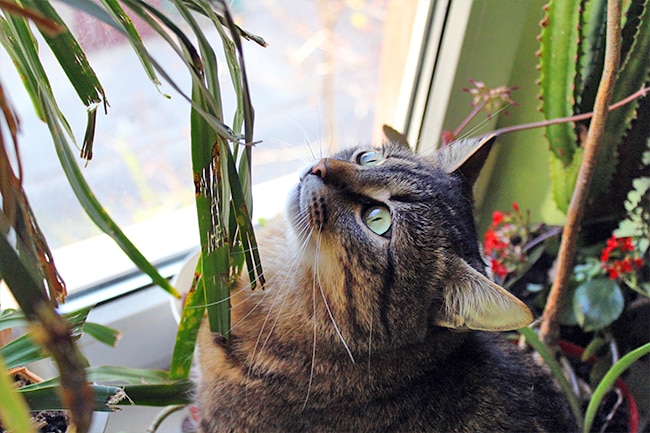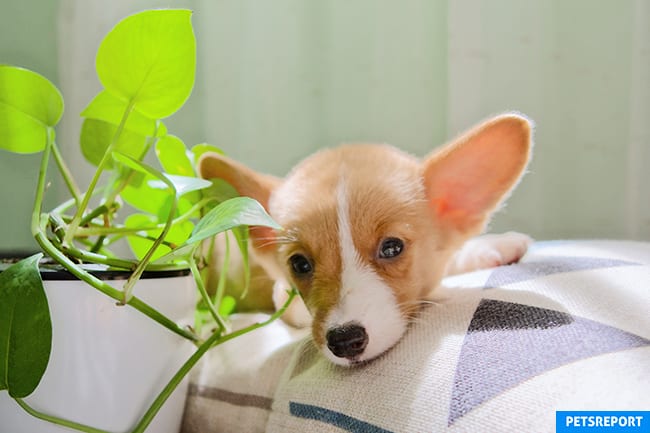Plant parenthood is a journey but one inevitably sad discovery it that some indoor plants are not safe if you have small children or pets. Although plants are delightful to see, a large number of popular houseplants and their families are toxic. Some have minor toxicity ratings, while others can cause severe reactions or even death. Therefore, when adding greenery to your home, do your research on which houseplants pet owners should avoid.
The good news is that you will be able to plan your indoor oasis with the safety of your pets in mind. By doing some research, you will still be able to have an indoor plant collection that is the envy of your neighbors. Keep in mind that you can still have some plants listed as poisonous as long as they are far out of reach of children and pets. This will reduce the risk of any plant-related troubles, especially in times you leave your pet at home unattended.
Here is a list of some of the many toxic plants that you should avoid to keep both pets and kids safe.
1. Philodendron
This tropical plant comes from a huge genus, meaning that there are many plants within the same family with many of the same characteristics. Philodendrons are hugely popular with plant lovers but not so much with pets who consume them. Although only mildly toxic to humans, both cats and dogs can have serious reactions to Philodendrons. Exposure symptoms include swelling and pain of the lips, tongue, mouth, vomiting, excessive drooling, oral irritation, and difficulty swallowing.
2. Sansevieria
Better known as a Snake Plant, Sansevieria is a common addition to indoor gardens. Part of its popularity is that it will grow in low light conditions, making it perfect for people with few windows. The symptoms of ingestion toxicity include diarrhea, vomiting, and nausea.
3. Bird of Paradise
Unarguably one of the most stunning plants in the world, Bird of Paradise is a definite tropical delight that you will want to avoid. It is toxic to a variety of pets, along with children. The toxicity is mild and comes mainly from the fruit and the flower. What you can expect to see is drowsiness, vomiting, and nausea.
4. Aloe
The Aloe plant is known far and wide and is praised for its skin healing properties and medicinal uses. However, it is not the edible gel of the plant, which causes the problem. Issues arise when other parts of the plant are ingested, and the symptoms are lethargy, vomiting, and diarrhea.
Many popular houseplants and their families are toxic and therefore are houseplants pet owners should avoid.
PetsReport.com
5. Fiddle Leaf Fig
This is another example of a plant we all recognize. Used by interior designers often, Fiddle Leaf Fig is recognizable by the large leaves that are shaped like fiddles. It is extremely toxic when ingested by dogs and can cause painful gastrointestinal and skin issues. This plant has added risks because of its size. The Fiddle Leaf Fig grows quite large and is often placed on the floor.
6. Jade Plant
Another popular indoor garden plant from a large family, Jade Plant is toxic to cats, dogs, and humans. When it is ingested, signs of toxicity are incoordination, depression, and vomiting.

7. ZZ Plants
In recent years ZZ Plants have become very popular since they need almost no light to grow, and they are very low maintenance. The toxic properties contained within the plant are insoluble calcium oxalates. If ingested by people, cats, or dogs, they may cause oral irritation, swelling, burning, excessive drooling, and breathing difficulties.
8. Dieffenbachia
Also known as dumb cane, the tropical Dieffenbachia plant has beautiful variegation. They are commonly found in many homes and this is bad news for pets. The plant contains the same compounds as the ZZ plant and if ingested, both dogs and cats can experience excessive drooling, breathing difficulties, vomiting, and oral swelling and irritation. Dieffenbachias grow quite large, so they are often placed on the floor.
9. Peace Lily
Frequently seen around Easter, the beautiful glossy leaves and showy white flowers are a prime reason Peace Lily are kept indoors. There are several different varieties, but all are toxic to both cats and dogs. It will cause vomiting if ingested, but even simply touching the plant will cause contact irritation.
10. Kalanchoe
This member of the cactus family can be grown both indoors and out and is one of the most popular houseplants around the world. Kalanchoe is characterized by its hundreds of tiny flowers in varying shades of red, white, orange, purple, and pink. These are so toxic because they belong to a genus of plants that contain toxins that work on the cardiac system. When cats or dogs ingest small amounts, the most common result is gastrointestinal upset or irritation. However, when ingesting large quantities, real trouble can occur. Keep your eyes open for any of the following signs – weakness, changes in heart rhythm and rate, or collapse. These could easily become a veterinary emergency requiring immediate care.
If you love to have plants all over your home, take stock of what you have, and do some research to see if they are safe for your beloved pets or if you’re growing any houseplants pet owners should avoid. You may have to move any dangerous plants out of reach or get rid of them altogether.

